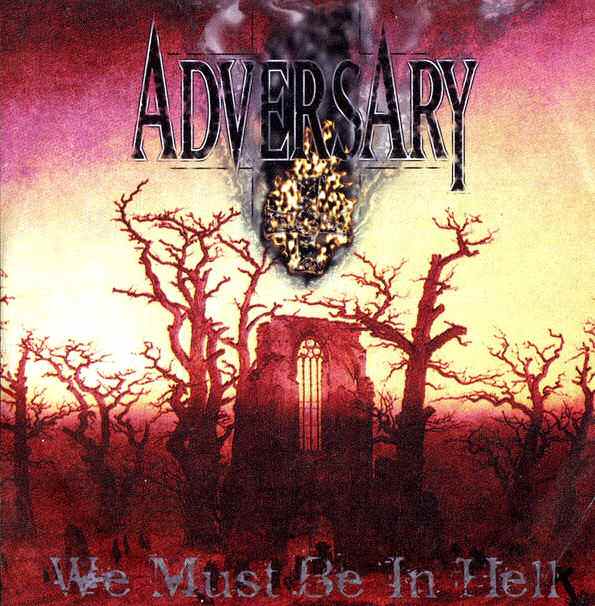
The mid-to-late 1990s wasn’t a particularly interesting period in US death metal history. Old bands were busy coping with their past triumphs and the newer arrivals on the scene did what they could to recapture the magic of preceding classics, but by doing so stalled the potentials of exploration presented to them. However, there did exist a few notable exceptions, many of whom chose to peek at their European counterparts for galvanization. Among them were the Indiana-based Adversary – a much overlooked act then and now who came up with distinctive and unique approach to death metal.
In his review of Adversary’s 2001 full-length album Forsaken, Brett Stevens accurately described Adversary as an old death metal band working within a heavy metal framework, prompted by vestiges of 1980s atmospheric rock melody. This very much hits the spot, but to the characterization should also be added a notable influence from rudimentary death/doom metal-stalwarts Asphyx. Like their European peers, Adversary eschews the overt technical demonstration and convoluted riff mazes of contemporary death metal in favor of a style of composition more closely aligned to black- and doom metal. Songs rarely feature more than a handful of riffs arranged in cyclic, but not circular structures that in black metal fashion use of texture and melody as a guiding device. However, rather than aiming for the esoteric, narrative-driven compositional mode of the Dutchmen, Adversary employ dynamics like a heavy metal band. Loosely structured verse/chorus arrangements complemented by interstitial phrases build up to massive climaxes, before winding down into spirals of oblivion.
Spanning approximately 20 minutes in length and featuring 4 songs that would all end up on Adversary’s second full-length album Forsaken (2001), We Must Be in Hell could easily be mistaken for a demo-level warm-up exercise for better things to come. This, however, is not the case. In fact, We Must Be in Hell might just be the band’s creative pinnacle. In terms of structure, melody, vocals, riffs, etc., the songs are pretty much identical to the full-length versions, but the performance is ten times more energetic and the production raw and thicker in atmosphere. These seemingly superficial factors are not to be neglected, as they bring out the full potential of the material. The best case in point here would be the opening number “Suffering” (track number four on Forsaken).
With We Must Be in Hell, Adversary has created something as unusual as emotionally charged, but not the least sentimental death metal that is also heavy as hell. Moreover, Adversary’s approach to song writing and melody results in catchy and varied songs – something which we are not spoiled with in a genre where consistency tends to trump individual song memorability. As additional icing on the cake, do yourself a favor and head over to Discogs and search We Must Be in Hell. Rather than spending a fortune on some rare but largely forgettable piece of plastic, you can get five of these to share with your friends for a dollar each.
Tags: adversary, death metal, forsaken, we must be in hell


The creators behind this band listen to a lot of Motorhead, Venom, and melodic Swedish death metal, I’d bet.
I agree that the track “We Must Be in Hell” is a very, very catchy tune and that there is a lot of melodic DM atmosphere in the music. Perspicacious review…